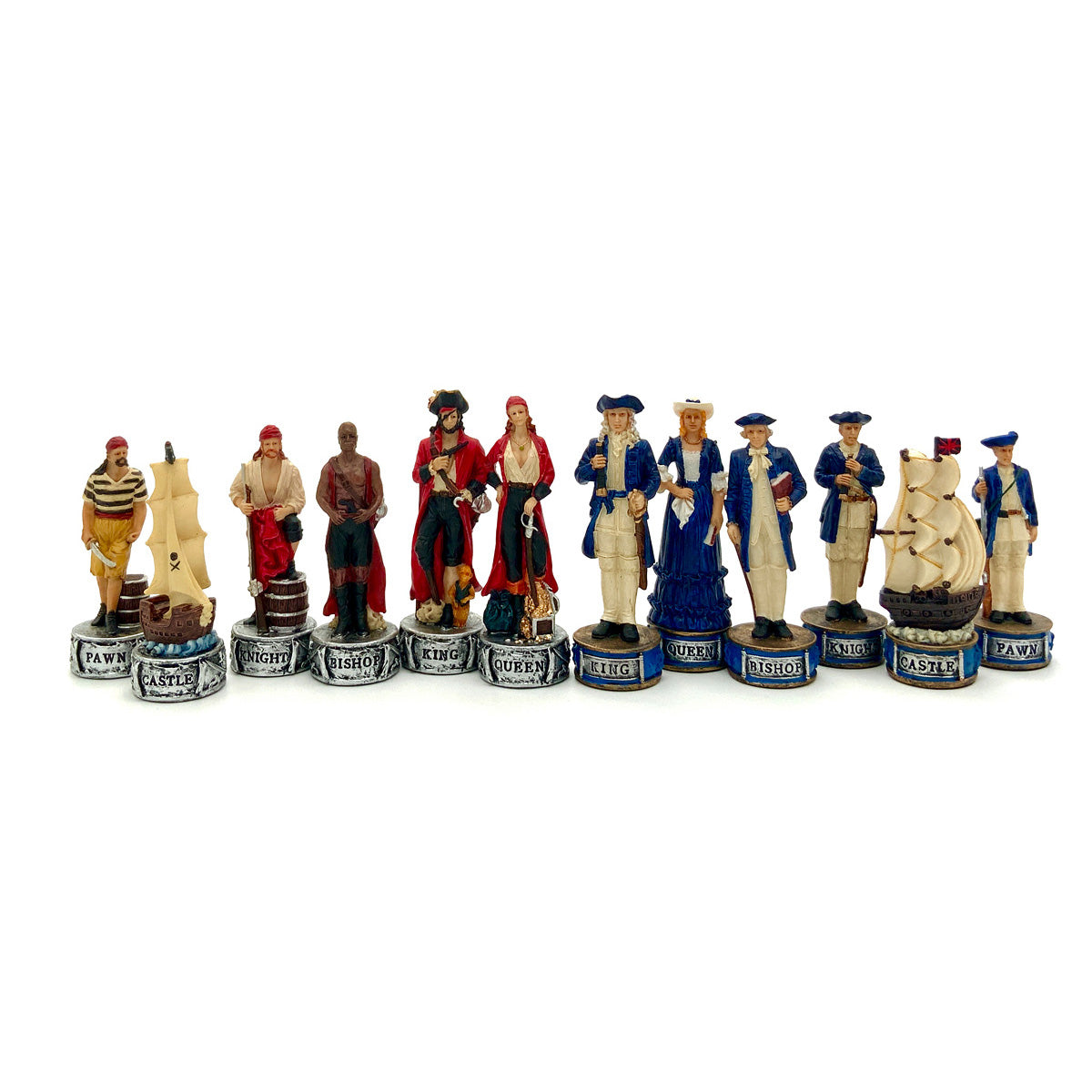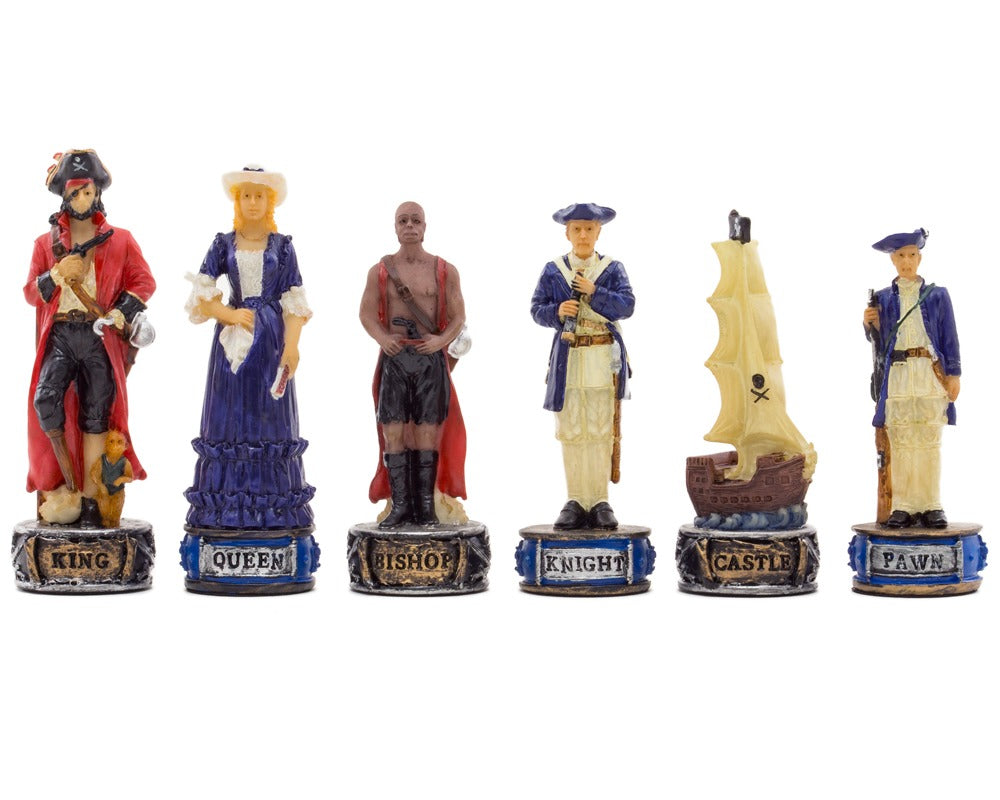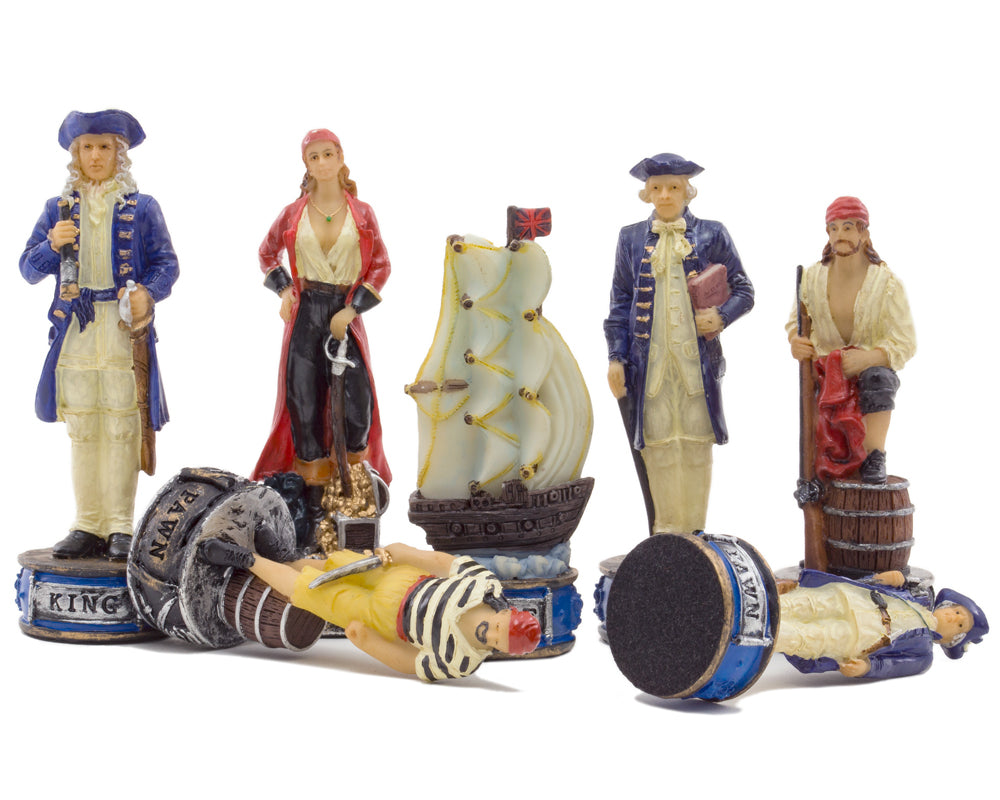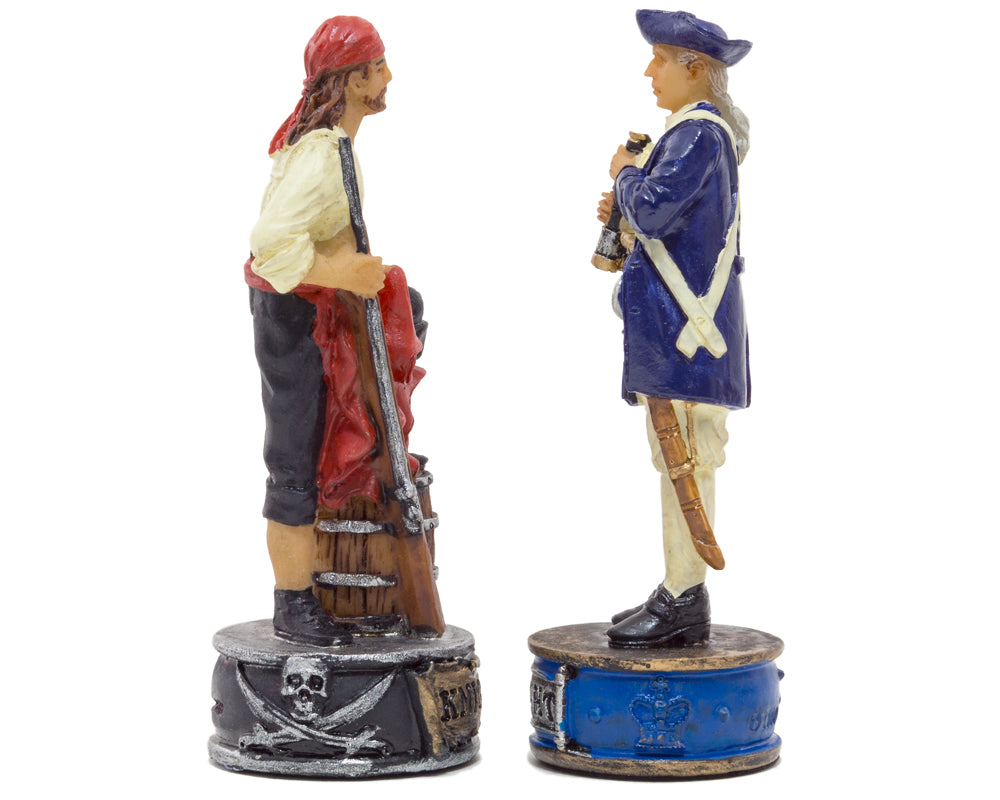



ITALIAN CHESS PIECES RESIN PIRATES
"Pirati" Collection Chess Pieces
The "Pirati" collection chess pieces are made of polystone.
King size: 80 mm
King weight: 26 g
King base diameter: 25 mm
Pawn height: 70 mm
Pawn weight: 20 g
Pawn base diameter: 25 mm
CHESS PIECES
Created by the world-renowned company Italfama, each of these chess pieces is crafted from a mixed stone material. The exquisite craftsmanship is evident from the pawns, depicting British infantry and daring sailors, to the horses and bishops, which are styled as high-ranking officers or pirates.
The pirate king is depicted with a romantic twist: from his wooden leg to the eye patch and his pet monkey. The military king is stylishly dressed in the traditional military uniform of the period, complete with a fashionable hairstyle and glasses.
The most impressive pieces in this set are the rooks. These military ships in the style of galleons are finely detailed, from the wooden hulls to the billowing masts. At the top of each rook is a flag, either the British standard or the Jolly Roger.
We pair these beautiful pieces with a walnut and maple chessboard, offering you the "Pirates vs. Navy" chess set. With or without the board, this set makes a fantastic gift for any chess enthusiast or fan of "Pirates of the Caribbean".
HISTORY
The earliest documented instances of piracy date back to the 14th century BC when seafaring peoples or sea bandits attacked the ships of Aegean and Mediterranean civilizations.
The classic age of piracy in the Caribbean lasted from around 1650 to the mid-1720s. By 1650, colonial empires had begun to take shape under the leadership of England, France, and the Dutch Republic. These growing colonies had a significant trade volume and general economic growth. Money was made — or stolen — and much of it was moved across the waves.
French pirates, or buccaneers, settled on the northern part of Spanish Hispaniola as early as 1625, initially living as hunters rather than thieves. Their transition to full-blown piracy was gradual, partly triggered by the Spanish attempts to wipe out not only the pirates but also the animals they hunted for survival. Pirates then turned their attention to the island of Tortuga, a more defensible island that limited their resources and increased the number of their raids.
The rise in piracy on Tortuga was further fueled when the English seized Jamaica from Spain in 1655. Early English governors of Jamaica freely issued "letters of marque" — a government-issued license for attacking and seizing enemy ships, which were then required to be presented to admiralty courts.
The development of Port Royal provided pirates with a more profitable and pleasant place to sell their plunder.
Choose options




ITALIAN CHESS PIECES RESIN PIRATES
Sale price903,00 zł
